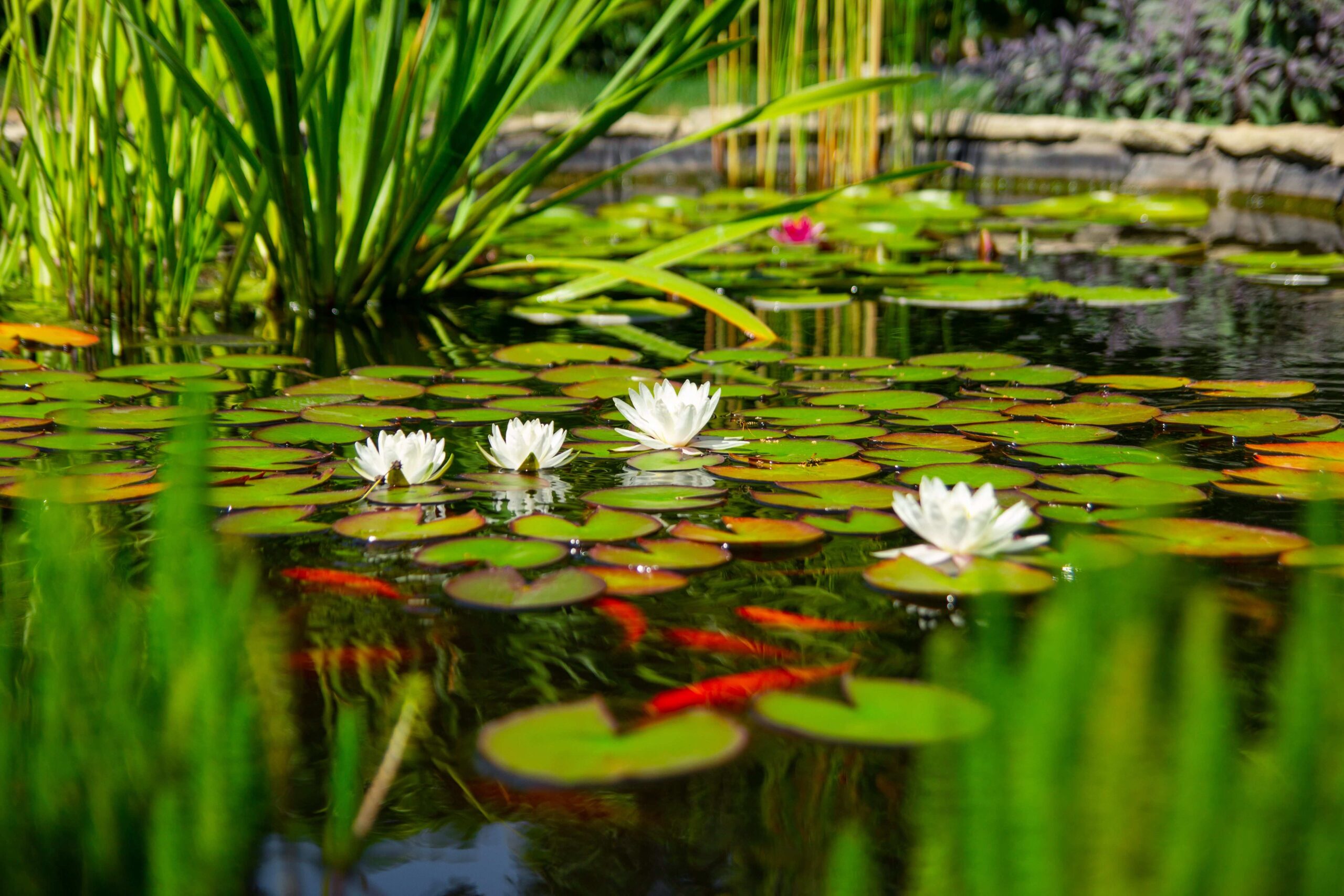
Blog

Best Plant Additions to Make for Keeping Backyard Ponds Healthy
March 17, 2023
By Jack Crawford
The incorporation of plants into pond ecosystems is a widely recognized method for enhancing visual appeal while also promoting overall ecosystem health. This article will discuss some of the most well-suited plants for this purpose in the Midwestern United States.
Water lilies: Water lilies are a classic choice for pond gardens, and for good reason. These plants have large, vibrant flowers that bloom throughout the summer, adding a burst of color to your pond. They also provide shade for fish, helping to regulate water temperature and reduce algae growth. In the Midwest, some good options for water lilies include the hardy water lily (Nymphaea ‘Attraction’) and the tropical water lily (Nymphaea ‘Joey Tomocik’).
Cattails: Cattails are another popular choice for pond gardens, and they are particularly well-suited to the Midwest. These tall, reed-like plants provide vertical interest and can help to stabilize the shoreline. They also act as a natural filter, absorbing excess nutrients from the water and reducing the growth of algae. Some common cattail species in the Midwest include the common cattail (Typha latifolia) and the narrow-leaved cattail (Typha angustifolia).
Pickerelweed: Pickerelweed is a native plant that is well-suited to ponds in the Midwest. This plant has large, showy spikes of purple flowers that bloom in late summer, adding a pop of color to your pond. It also provides habitat for aquatic wildlife, including frogs and dragonflies. Additionally, pickerelweed helps to absorb excess nutrients from the water, reducing the growth of algae.
Blue flag iris: The blue flag iris is another native plant that is well-suited to pond gardens in the Midwest. This plant has striking blue-purple flowers that bloom in late spring and early summer. It also provides habitat for aquatic wildlife, including bees and butterflies. Additionally, blue flag iris helps to stabilize the shoreline and absorb excess nutrients from the water.
Horsetail: Horsetail is a unique plant that is well-suited to wetland areas around ponds. This plant has long, jointed stems that resemble bamboo, and it can reach heights of up to 4 feet. Horsetail provides vertical interest and can help to stabilize the shoreline. It also absorbs excess nutrients from the water, reducing the growth of algae. Some good options for horsetail in the Midwest include the giant horsetail (Equisetum telmateia) and the scouring rush (Equisetum hyemale).
Adding plants to your pond area is a great way to enhance its visual appeal and promote overall pond health. In the Midwest, water lilies, cattails, pickerelweed, blue flag iris, and horsetail are all great options for achieving this goal. When choosing plants for your pond, be sure to select species that are well-suited to your climate and growing conditions, and always follow proper planting and maintenance techniques to ensure the long-term health and success of your pond garden.
